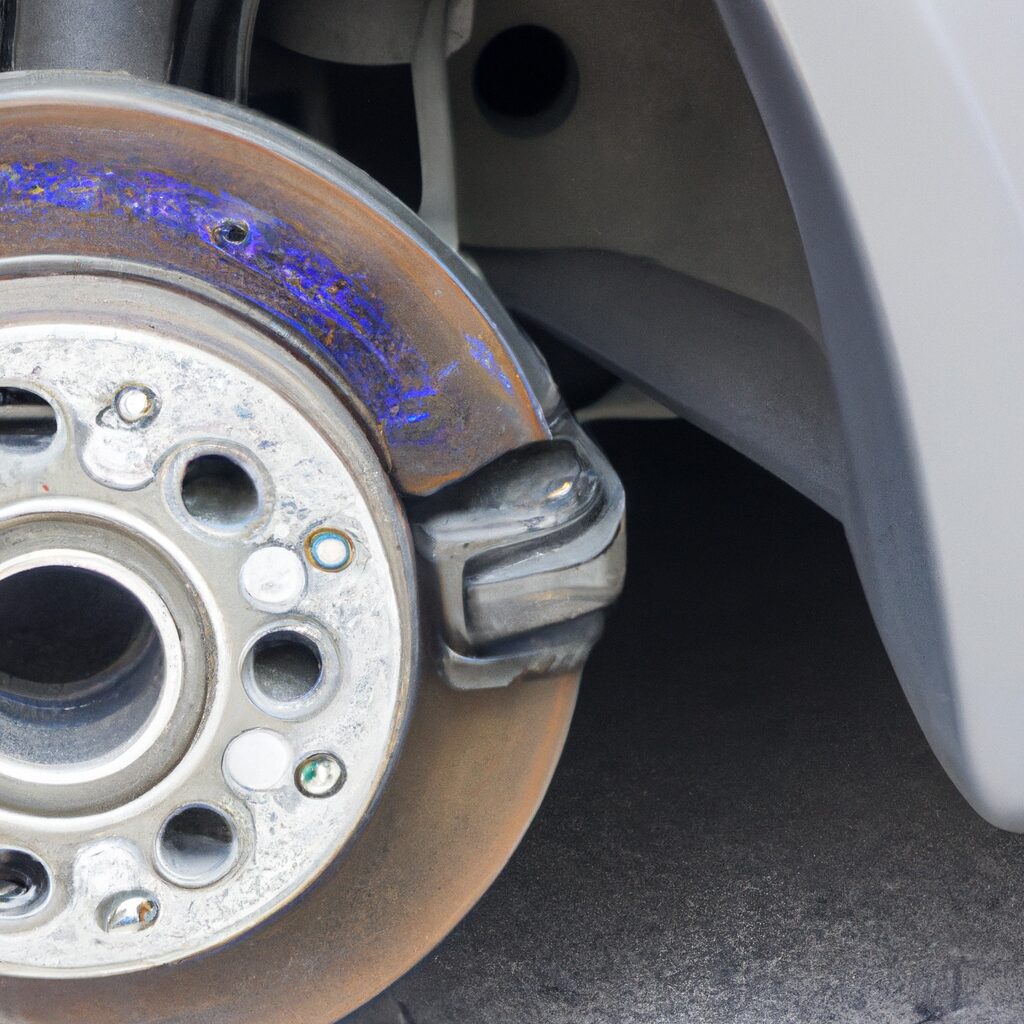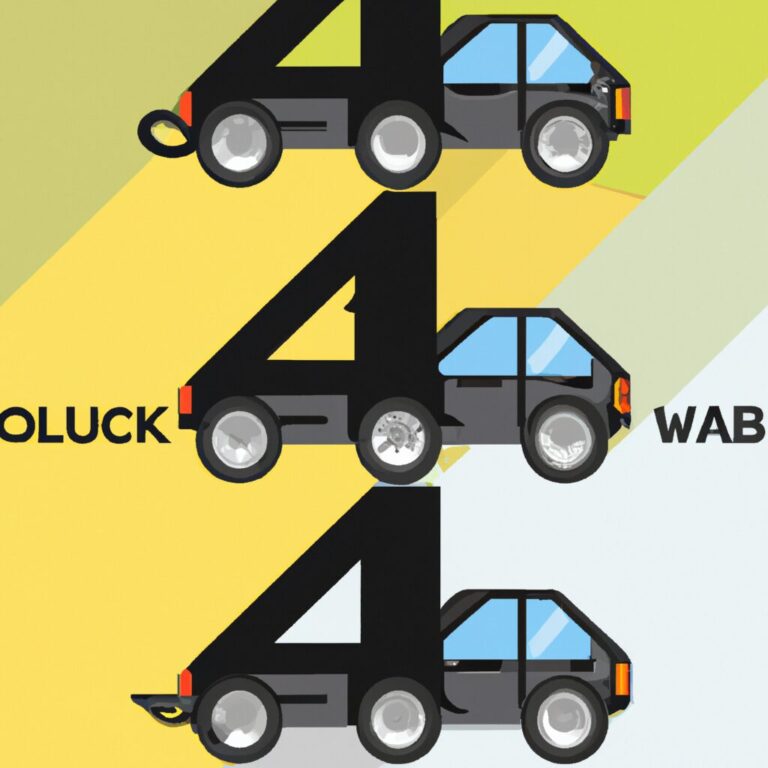brakes lock up when car is in reverse
Introduction
When a car is in reverse, it is important for the brakes to lock up in order to prevent the car from rolling backwards. This is especially important when the car is parked on a hill or incline. Brake lock up is a safety feature that helps to keep the car from rolling backwards and potentially causing an accident. Brake lock up is achieved by the use of a parking brake, which is a mechanical device that is used to keep the car from rolling when it is parked. The parking brake is usually engaged by pulling a lever or pushing a button, and it is released by pushing the same lever or button. In addition to the parking brake, some cars also have an electronic brake system that will automatically engage the brakes when the car is put into reverse. This system is designed to provide an extra layer of safety when the car is in reverse.
How to Diagnose and Repair a Brake Lock Up When the Car is in Reverse
If your car is experiencing a brake lock up when it is in reverse, it is important to diagnose and repair the issue as soon as possible. A brake lock up can be dangerous and can cause damage to the car if not addressed. Here are the steps to diagnose and repair a brake lock up when the car is in reverse.
Step 1: Check the Brake Fluid Level
The first step is to check the brake fluid level. If the brake fluid is low, it can cause a brake lock up. To check the brake fluid level, locate the brake fluid reservoir and check the level. If the brake fluid is low, add more brake fluid to the reservoir.
Step 2: Check the Brake Pads
The next step is to check the brake pads. If the brake pads are worn or damaged, they can cause a brake lock up. To check the brake pads, remove the wheels and inspect the brake pads. If the brake pads are worn or damaged, they should be replaced.
Step 3: Check the Brake Lines
The next step is to check the brake lines. If the brake lines are leaking, it can cause a brake lock up. To check the brake lines, inspect the lines for any signs of leakage. If there is a leak, the brake lines should be replaced.
Step 4: Check the Brake Calipers
The next step is to check the brake calipers. If the brake calipers are sticking, it can cause a brake lock up. To check the brake calipers, inspect the calipers for any signs of sticking. If the calipers are sticking, they should be replaced.
Step 5: Check the Brake Rotors
The last step is to check the brake rotors. If the brake rotors are warped or damaged, it can cause a brake lock up. To check the brake rotors, inspect the rotors for any signs of warping or damage. If the rotors are warped or damaged, they should be replaced.
Once all of the components have been inspected and any necessary repairs have been made, the brake lock up should be resolved. It is important to regularly inspect the brakes to ensure that they are in good condition and to prevent any further issues.
Common Causes of Brake Lock Up When the Car is in Reverse
Brake lock up when the car is in reverse is a common issue that can be caused by a variety of factors. The most common causes of brake lock up when the car is in reverse include:
1. Worn Brake Pads: Worn brake pads can cause the brakes to lock up when the car is in reverse. This is because the brake pads are not able to provide enough friction to stop the car.
2. Low Brake Fluid: Low brake fluid can cause the brakes to lock up when the car is in reverse. This is because the brake fluid is not able to provide enough pressure to the brakes to stop the car.
3. Faulty Brake Calipers: Faulty brake calipers can cause the brakes to lock up when the car is in reverse. This is because the calipers are not able to provide enough pressure to the brakes to stop the car.
4. Faulty Brake Lines: Faulty brake lines can cause the brakes to lock up when the car is in reverse. This is because the brake lines are not able to provide enough pressure to the brakes to stop the car.
5. Faulty Brake Rotors: Faulty brake rotors can cause the brakes to lock up when the car is in reverse. This is because the rotors are not able to provide enough friction to stop the car.
It is important to have your brakes inspected regularly to ensure that they are in good working order and to prevent brake lock up when the car is in reverse. If you experience brake lock up when the car is in reverse, it is important to have the issue diagnosed and repaired as soon as possible to ensure the safety of you and your passengers.
The Benefits of Installing an Anti-Lock Brake System to Prevent Lock Up When the Car is in Reverse
The installation of an anti-lock brake system (ABS) is an important safety measure for any vehicle. ABS helps to prevent the wheels from locking up when the car is in reverse, which can lead to a loss of control and a potential accident. The benefits of installing an ABS system are numerous and include improved safety, better control, and increased fuel efficiency.
Safety is the primary benefit of installing an ABS system. When the car is in reverse, the wheels can lock up, causing the car to skid and potentially lose control. An ABS system prevents this from happening by automatically applying and releasing the brakes as needed to keep the wheels from locking up. This helps to ensure that the car remains under control and that the driver can safely maneuver the vehicle.
In addition to improved safety, an ABS system also provides better control when the car is in reverse. The system helps to keep the car stable and prevents it from skidding, which can be especially helpful in wet or icy conditions. This improved control can help the driver to avoid potential accidents and to maintain control of the vehicle.
Finally, an ABS system can also help to improve fuel efficiency. When the brakes are applied and released as needed, the car does not have to expend as much energy to stop or slow down. This can help to reduce fuel consumption and improve the overall efficiency of the vehicle.
Overall, the installation of an ABS system is an important safety measure for any vehicle. The system helps to prevent the wheels from locking up when the car is in reverse, which can lead to a loss of control and a potential accident. In addition to improved safety, an ABS system also provides better control and increased fuel efficiency. For these reasons, installing an ABS system is a wise decision for any vehicle owner.
How to Avoid Brake Lock Up When the Car is in Reverse
When driving a car, it is important to be aware of the potential for brake lock up when the car is in reverse. Brake lock up occurs when the brakes are applied too hard or too quickly, causing the wheels to lock up and the car to skid. This can be a dangerous situation, as it can lead to loss of control of the vehicle. To avoid brake lock up when the car is in reverse, there are a few steps that should be taken.
First, it is important to ensure that the brakes are in good working order. If the brakes are worn or not functioning properly, they may not be able to handle the sudden application of pressure when the car is in reverse. It is also important to check the brake fluid levels regularly, as low levels can cause the brakes to lock up more easily.
Second, it is important to apply the brakes slowly and gently when the car is in reverse. This will help to ensure that the brakes are not applied too quickly or too hard, which can cause the wheels to lock up.
Third, it is important to be aware of the terrain when the car is in reverse. If the surface is slippery or uneven, it can be more difficult to control the car, and the brakes may be applied too quickly or too hard.
Finally, it is important to be aware of the speed of the car when it is in reverse. If the car is moving too quickly, it can be difficult to control the brakes, and they may be applied too quickly or too hard.
By following these steps, drivers can help to avoid brake lock up when the car is in reverse. This can help to ensure a safe and smooth driving experience.
The Pros and Cons of Different Brake Systems to Prevent Lock Up When the Car is in Reverse
Brakes are an essential safety feature of any vehicle, and it is important to understand the different types of brake systems available to ensure that your car is equipped with the best system to prevent lock up when the car is in reverse.
Disc Brakes
Disc brakes are the most common type of brake system used in modern cars. They consist of a rotor, caliper, and brake pads. When the brake pedal is pressed, the caliper squeezes the brake pads against the rotor, creating friction and slowing the car down. Disc brakes are known for their superior stopping power and are often used in performance vehicles. The main disadvantage of disc brakes is that they can be prone to lock up when the car is in reverse, which can cause the car to skid or spin out of control.
Drum Brakes
Drum brakes are an older type of brake system that uses a drum, brake shoes, and wheel cylinders. When the brake pedal is pressed, the wheel cylinders push the brake shoes against the drum, creating friction and slowing the car down. Drum brakes are less powerful than disc brakes, but they are more reliable and less prone to lock up when the car is in reverse.
ABS Brakes
ABS brakes are a type of brake system that uses an electronic control unit to monitor the speed of the wheels and adjust the brake pressure accordingly. This prevents the wheels from locking up when the car is in reverse, allowing the driver to maintain control of the vehicle. ABS brakes are more expensive than traditional brake systems, but they offer superior stopping power and improved safety.
Overall, there are a variety of brake systems available to prevent lock up when the car is in reverse. Disc brakes offer superior stopping power, but they can be prone to lock up. Drum brakes are more reliable, but they are less powerful. ABS brakes are the most expensive option, but they offer superior safety and control. Ultimately, the best brake system for your car will depend on your budget and driving needs.
How to Maintain Your Brakes to Prevent Lock Up When the Car is in Reverse
Maintaining your brakes is essential to preventing lock up when the car is in reverse. Properly functioning brakes are essential for safe driving, and regular maintenance can help ensure that your brakes are in good condition. Here are some tips for maintaining your brakes to prevent lock up when the car is in reverse:
1. Check your brake fluid regularly. Brake fluid is essential for proper brake function, and it should be checked at least once a month. If the fluid is low, it can cause the brakes to lock up when the car is in reverse.
2. Inspect your brakes regularly. Make sure to inspect your brakes for any signs of wear or damage. If you notice any issues, have them repaired immediately.
3. Replace your brake pads as needed. Brake pads should be replaced every 25,000 miles or so. If they are worn out, they can cause the brakes to lock up when the car is in reverse.
4. Have your brakes serviced regularly. Have your brakes serviced by a professional mechanic at least once a year. This will help ensure that your brakes are in good condition and functioning properly.
By following these tips, you can help ensure that your brakes are in good condition and prevent lock up when the car is in reverse. Regular maintenance is essential for safe driving, so make sure to take care of your brakes and have them serviced regularly.
The Latest Technologies to Help Prevent Brake Lock Up When the Car is in Reverse
Modern vehicles are equipped with a variety of technologies to help prevent brake lock up when the car is in reverse. These technologies include electronic stability control (ESC), anti-lock braking systems (ABS), and traction control systems (TCS).
ESC is a computer-controlled system that helps the driver maintain control of the vehicle in difficult driving conditions. It works by applying the brakes to individual wheels to help keep the car on its intended path. This helps to prevent the car from skidding or spinning out of control.
ABS is a system that helps to prevent the wheels from locking up when the brakes are applied. It works by monitoring the speed of each wheel and applying the brakes to each wheel individually. This helps to prevent the car from skidding or sliding out of control.
TCS is a system that helps to maintain traction on slippery surfaces. It works by monitoring the speed of each wheel and applying the brakes to each wheel individually. This helps to prevent the car from skidding or sliding out of control.
These technologies are designed to help prevent brake lock up when the car is in reverse. They work by monitoring the speed of each wheel and applying the brakes to each wheel individually. This helps to prevent the car from skidding or sliding out of control. By using these technologies, drivers can be assured that their car will remain under control even in difficult driving conditions.
How to Troubleshoot Brake Lock Up When the Car is in Reverse
If your car’s brakes lock up when you put it in reverse, it can be a frustrating and potentially dangerous issue. Fortunately, there are a few steps you can take to troubleshoot the problem and get your car back on the road.
First, check the brake fluid level. If the fluid is low, it could be causing the brakes to lock up. If the fluid is low, top it off and test the brakes again.
Next, check the brake pads. If the pads are worn down, they may be causing the brakes to lock up. If the pads are worn, replace them and test the brakes again.
If the brake fluid and pads are in good condition, the issue may be with the brake calipers. If the calipers are sticking, they can cause the brakes to lock up. To fix this, you’ll need to remove the calipers and clean them.
Finally, if the brake fluid, pads, and calipers are all in good condition, the issue may be with the brake lines. If the brake lines are clogged or damaged, they can cause the brakes to lock up. To fix this, you’ll need to replace the brake lines.
By following these steps, you should be able to troubleshoot the issue and get your car back on the road. If you’re still having trouble, it’s best to take your car to a qualified mechanic for further inspection.
Q&A
1. What causes brakes to lock up when a car is in reverse?
A: Brakes can lock up when a car is in reverse due to a variety of issues, including worn brake pads, a sticking caliper, or a faulty brake booster. In some cases, the brakes may also lock up due to a malfunctioning ABS system.
2. How can I tell if my brakes are locking up when I put the car in reverse?
A: If your brakes are locking up when you put the car in reverse, you may notice a grinding or squealing sound coming from the brakes, or the car may jerk or shudder when you apply the brakes. You may also notice that the car takes longer to stop than usual.
3. What should I do if my brakes lock up when I put the car in reverse?
A: If your brakes lock up when you put the car in reverse, it is important to have the brakes inspected and repaired as soon as possible. A qualified mechanic can diagnose the issue and recommend the necessary repairs.
4. Is it safe to drive a car with brakes that lock up when it is in reverse?
A: No, it is not safe to drive a car with brakes that lock up when it is in reverse. Driving with brakes that lock up can cause the car to skid or spin out of control, which can lead to an accident.
5. How can I prevent my brakes from locking up when I put the car in reverse?
A: To prevent your brakes from locking up when you put the car in reverse, make sure to have your brakes inspected and serviced regularly. Additionally, make sure to check your brake fluid levels and replace any worn brake pads or components.
6. What are the consequences of driving with brakes that lock up when the car is in reverse?
A: Driving with brakes that lock up when the car is in reverse can lead to a loss of control of the vehicle, which can result in an accident. Additionally, driving with brakes that lock up can cause excessive wear and tear on the brakes, leading to costly repairs.
7. Can I fix my brakes myself if they lock up when I put the car in reverse?
A: It is not recommended to attempt to fix your brakes yourself if they lock up when you put the car in reverse. Brake repairs should only be performed by a qualified mechanic, as incorrect repairs can lead to further damage and unsafe driving conditions.
8. How much does it cost to repair brakes that lock up when the car is in reverse?
A: The cost of repairing brakes that lock up when the car is in reverse will depend on the cause of the issue and the necessary repairs. In general, brake repairs can range from a few hundred dollars to several thousand dollars.
Conclusion
In conclusion, brakes can lock up when a car is in reverse due to a variety of reasons. This can be caused by a faulty brake system, worn brake pads, or a lack of lubrication. It is important to have your brakes inspected regularly to ensure they are in good working order and to prevent any potential issues. If you experience any issues with your brakes, it is important to have them checked out by a professional as soon as possible.




